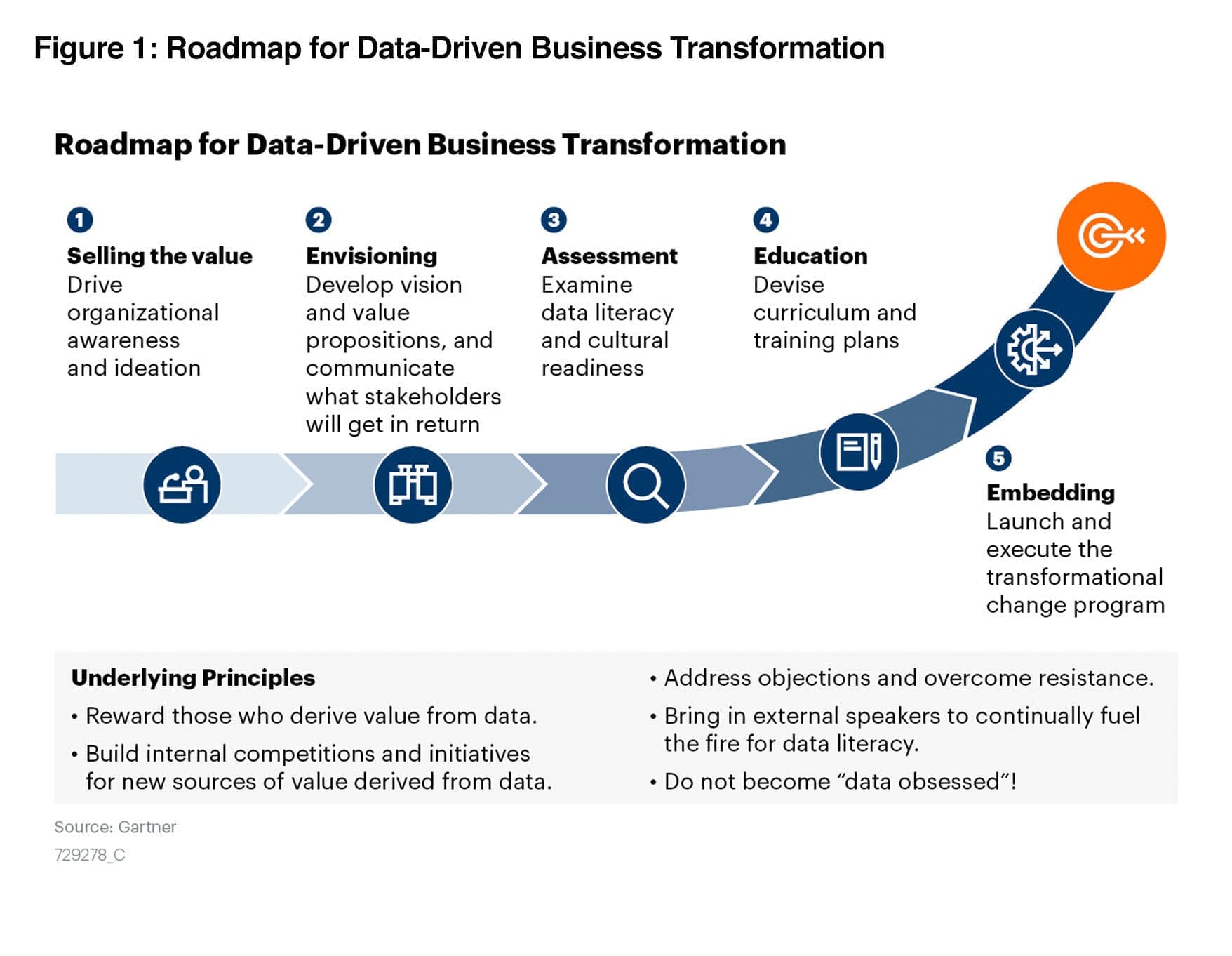If we say that Data and Analytics strategies are increasingly present in all aspects of companies, communities, and even our personal lives, no one would be surprised. We all know this by now, but the million-dollar questions are: How do we do it? Where do we start? Is our company ready?
According to Gartner, "By 2022, 90% of corporate strategies will explicitly mention information as a critical enterprise asset and analytics as an essential competency."
The time for speculation is over, and the time for decisions is upon us. Companies that invest time in preparation, are willing to change, and are flexible to achieve data-driven management will be the ones that become data-driven. CDOs must start taking action. The lasting and significant change that is needed will take time because people have to learn new skills and behaviors. Darwin said about change, "It is not the strongest of the species that survives, nor is it the most intelligent that survives. It is the one that adapts best to change".
Data and Analytics leaders can't miss the Gartner action plan and the five stages for data-driven transformation.
1. Strive to raise awareness in the organization
While enterprise CDOs are aware of the need for data-driven business decisions, they must tie them to specific business outcomes (beyond "better decision-making") and identify the benefits that justify the investment.
It is about taking the initiative through strong leadership to "sell" the value of data, which can be accomplished by creating a narrative that establishes a consistent vision of what will be achieved while being honest and courageous in pointing out what hinders progress.
2. Develop the vision and value propositions, and communicate what the company will gain in return
"A striking 82% of CEOs participating in Gartner’s Annual CEO and Senior Business Executive Survey said they have a management initiative or digital transformation underway to make their respective companies more digital (versus 62% in 2018), with 77% planning to increase investment in digital capabilities.”
A company must understand that data is a competency that everyone must practice, not only a few specialists. Involve different teams and identify people who are enthusiastic about Data and Analytics strategies. At this stage, it's best to carry out a pilot project that will provide lessons learned and allow you to refine methods.
3. Examine Data Literacy strategy and cultural readiness
Assessing the Data Literacy of employees - regardless of their position - is a critical step in ensuring that an organization has the necessary skills, knowledge, and competencies.
It is necessary to work collaboratively with HR and business managers to identify the people who need a certain level of data literacy. From here, it is important to establish customized training plans based on category. Not all jobs will need to learn about all topics. Some people will need a basic understanding of key topics, and others will need to go deeper.
4. Design curriculum and training
Once you have identified what type of training each person needs, it is time to implement effective methods. You can do this by assessing skills and training requirements while determining training performance metrics.
This phase is where creativity comes into play to create the teaching methods best suited for your company, which could be designing more formal training programs with vendors or incorporating on-the-job learning experiences.
5. Launch and execute the transformational change program
In this last phase, it is time to address the cultural challenge, take action and maintain it. Put focus, energy, and effort into change management.
It is important to have a coordination strategy and to encourage people to participate. One aspect of change that is often ignored but is vital is that people change at different rates. The vast majority of change programs assume that change will occur for everyone at the same time.
These five stages are the pieces of a puzzle that lead us to achieve one purpose: the transformation to a data-driven enterprise capable of unleashing data and turning it into real value. As the saying goes, Rome wasn't built in a day. So it's time to act and start building a data-driven culture.

Gartner,Roadmap for Data Literacy and Data-Driven Business Transformation: A Gartner Trend Insight Report, Alan D. Duncan, 5 October 2020
GARTNER is a registered trademark and service mark of Gartner, Inc. and/or its affiliates in the U.S. and internationally, and is used herein with permission. All rights reserved.
This graphic was published by Gartner, Inc. as part of a larger research document and should be evaluated in the context of the entire document. The Gartner document is available upon request from SDG Group.
.png?width=2000&name=SDG%20-%20Logo%20White%20(1).png)

-2.jpg)

%20(3).png)
.jpg)

%20(2).png)
.png)










.jpg)
